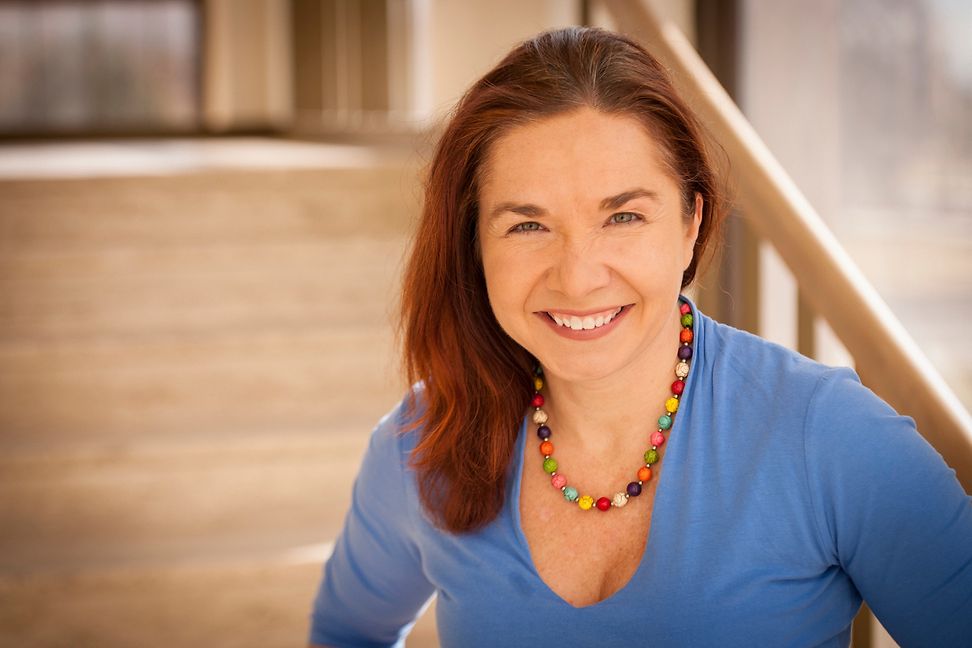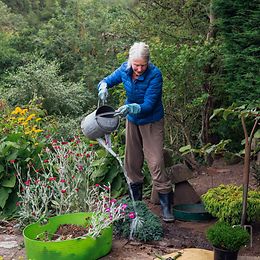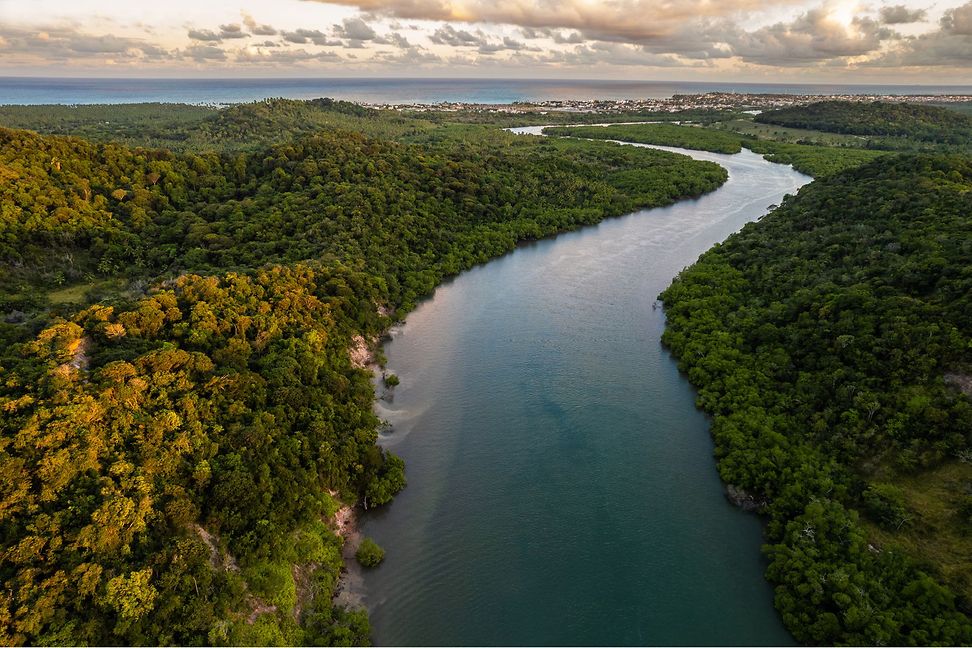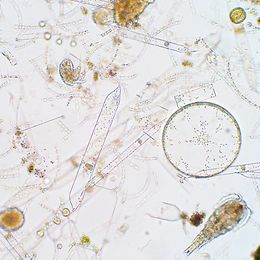在此处更改您的语言和 LGT 位置。
私人客户的数字平台
登入 LGT 智能银行
金融中介机构的数字平台
登入 LGT 智能银行 Pro
常见问题解答 (FAQ)
LGT 智能银行帮助
常见问题解答 (FAQ)
LGT 智能银行专业版帮助
Acclaimed climate scientist Katharine Hayhoe on the power of honest communication and collective action - and why nature itself is a big part of the solution when it comes to solving the climate and biodiversity crises.

If we look at the number of animal and plant species that have become extinct over the last few decades and the climate-fueled natural disasters occurring all over the world, it’s quite frightening. So why aren’t people doing more about it?
Katharine Hayhoe: For a long time, most of us thought of climate change and the biodiversity crisis as problems that only affected plants and animals, or that would only become urgent in the future. But today, we see the effects no matter where we live. We can see that climate change is making extreme weather events stronger, more frequent, and more dangerous. We can also see the changes in biodiversity in our own backyard. As a result, most people are worried now. But if you ask them if they’re actually doing anything about it, the most common answer is no.
Why is that?
You might think it’s because they're not scared enough and need more information about rising sea levels or the extinction of polar bears to motivate them to act. But the truth is, if someone is already worried about something but they aren’t actively trying to address it, it’s often because they don’t know what to do. How can we change that? By providing more information about positive, constructive solutions and how people can make an impact, rather than more fear-based information.
So what do you say to these people?

The most powerful thing we can do as an individual is … not be such an individual! What I mean by that is that if we want to change the system, we have to do so collectively. However, what is a system made of? Individuals, of course! People can change the system by acting together; and the first step is so simple that we often ignore it: it’s communication.
Imagine a long row of dominoes, and all the dominoes are all the different changes we want to make and all the different solutions we want to implement. Toppling the dominoes one by one takes a lot of time and effort. But the first domino is communication. If you knock over the first domino, then three, four, five dominoes go down behind it. That's the power of communication.
There's no single solution to the climate and biodiversity crises; rather, there is a host of them and we need them all. However, there is a first step that we can all implement and that is to talk about why these issues are important to me and to you here and now and what we, each of us individually and collectively, can do to make a difference. That’s when change happens.
People seem to finally be starting to understand the gravity of climate change, but not biodiversity loss. Am I wrong?
I think you're right. Unfortunately, we often don't realise that our entire existence depends on nature. Here’s just one example: more than half of the oxygen we breathe comes from tiny phytoplankton in the ocean. And as the ocean warms, the growth and productivity of these phytoplankton can be severely affected. Any change in the natural processes of phytoplankton has a knock-on effect on other organisms, potentially altering the dynamics of the whole marine ecosystem. So preserving these tiny micro-organisms is key to preserving life on this planet.
In addition to thinking about where the air we breathe comes from, we all have to ask ourselves: Where do we get the water we drink? It also comes from and is filtered by nature. Where does our food come from? We grow it, using the soil and water nature provides. If nature can’t support us, we’re the ones at risk.

So what happens in the worst-case-scenario, if we can’t stop biodiversity loss?
When it comes to climate change, it’s not human survival that’s at risk, it’s the survival of society. Our whole civilisation is built on the assumption of a stable climate. But with the biodiversity crisis, it’s our very existence that’s at risk. Our ability to breathe air, to have clean water to drink, to be able to grow food. Life on this planet has persevered through five extinctions; but it looked very different after each one.
We need to recognise that we cannot look at any of these crises in isolation, but that they are inextricably linked. What’s more, they are also linked to issues like inequality and health. Climate change is a "threat multiplier" – it takes issues such as poverty, disease, lack of access to food or clean water, and exacerbates them, making them worse. The good news, however, is that often climate solutions can also be solutions for health and equity.
Can you give us an example?
During a heat wave in many large cities, the temperature in low-income neighbourhoods can be up to seven degrees Celsius higher than in a wealthy neighbourhood in the same city. Why? Because there are few green spaces in low-income areas.

One of the most obvious solutions to this problem is to green these neighbourhoods, building parks and grassy areas and planting trees. These will immediately lower the temperature, which save people money on their air conditioning (if they have it) and helps them cope with extreme heat. But nature also filters the air – and low-income neighbourhoods tend to have high air pollution levels. Moreover, low-income neighbourhoods are more likely to be located in flood zones. So if you create green spaces, they absorb the water and provide flood control. Spending time in nature also improves your mental and physical health. Oh, and growing trees and other types of vegetation takes carbon out of the atmosphere!
So here you have a solution that reduces the impact of climate change and makes people more resilient, it reduces their energy bills and their heat stress, it reduces the risk of floods, it helps their mental and physical well-being, it takes up carbon, and it increases the value of the neighbourhood.
You’re Chief Scientist at The Nature Conservancy. What does your organisation stand for?
When it comes to solving the climate and biodiversity crises, there's no one solution that's going to fix everything; but there are many, many smaller solutions that add up to the answer. And what we've discovered through our science at The Nature Conservancy is that nature is a big part of that solution. Restoring nature, protecting nature, replenishing nature, practicing regenerative, climate-smart agriculture and installing green infrastructure in cities – these are all nature-based solutions that can take carbon out of the atmosphere and put it back into soils and ecosystems while improving our health and our quality of life. So what we do at The Nature Conservancy is bring nature into the conversation.
Can you tell us a bit about your collaboration with LGT Venture Philanthropy?
Our main joint project is the Nature for Water Facility. For people who want to protect and manage their freshwater systems, it provides them access to the latest information on the best nature-based solutions. By putting people in touch with experts who know the science and have seen practical responses implemented in dozens of places around the world, we can move solutions forward much faster. Imagine you know there’s a problem, like your water sources are limited or the water is polluted, but you’re not an expert – what do you do? On your own, you might have no idea. But if you go to this initiative, they help you find the best solution for your particular situation. It’s like going to the doctor for water.
About five years ago you gave a TED talk that went viral. In it, you said that the fight against climate change wasn't moving fast enough. What’s your view on that today?
When it comes to the climate crisis, there's no magic threshold. Under the Paris Agreement, the world agreed to hold the level of warming to below 2 degrees Celsius, but what the science tells us is "the lower the better". One and a half degrees is much better than 1.6. and 1.6 is better than 1.7. Every bit we do matters. The more we do now, the better off we'll be in the future.
Today, we’re doing more now than we were five years ago. But there are still many things that we’re not doing today and because of that, there will be additional harm. I am a huge advocate of doing as much as we can, as quickly as we can, as long as we are conscious of the fact that we are dealing with multiple crises. Inequality, pollution, climate change, biodiversity – we need to take the time to make sure that our solutions are addressing as many of these issues as possible, but when we know a solution works, we need to scale it as quickly as possible. We need to look for these win-win-win-win solutions and we need to implement them broadly: not for the sake of the planet, but for the sake of us humans and all the other living things who share our unique home and on whom our own lives depend.
Katharine Hayhoe is an atmospheric scientist whose research focuses on understanding the impacts of climate change on people and the planet. She is the Chief Scientist for The Nature Conservancy where she leads and coordinates the organization's scientific efforts. She is also a Paul Whitfield Horn Distinguished Professor and Endowed Chair in Public Policy and Public Law in the Public Administration program of the Department of Political Science at Texas Tech University.
She holds a B.Sc. in Physics from the University of Toronto and an M.S. and Ph.D. in Atmospheric Science from the University of Illinois and has received numerous awards and recognitions for her work, including four honorary doctorates and being named a United Nations Champion of the Earth.